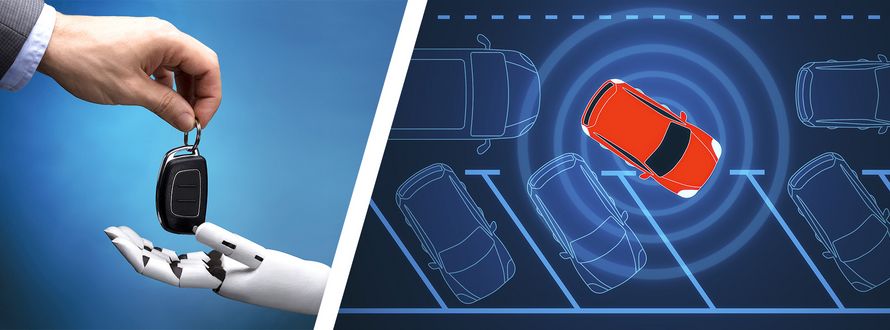As we continue to innovate and develop new technologies, the concept of autonomous vehicles is becoming more of a reality. One area where this technology is being applied is in the area of valet parking for cars. With the help of advanced sensors, cameras, and real-time processing, cars can now park themselves without the need for human intervention. This not only provides convenience for drivers but also offers significant benefits in terms of efficiency and space utilization. In this technical use case, we will explore the world of valet parking for cars with L2 or L3 level autonomy and the role of real-time applications in making it a reality.
Safe Car Operations: The Levels
With the increasing need for efficient parking solutions in urban areas, automated valet parking systems are becoming more prevalent. These systems are capable of providing Level 2 or Level 3 automated parking capabilities, allowing drivers to park their vehicles without direct intervention. SYSGO is part of the SAE International, the leader in connecting and educating mobility professionals to enable safe, clean, and accessible mobility solutions. The SAE International have defined five levels for automation from Level 0 to Level 5, whereas vehicles with Level 0 have no driving automation features. The driver is always in full control of the car.
Level 2 automated cars possess the ability to manage speed and steering concurrently, even if compliance with specific criteria such as a certain maximum speed limit is necessary. This involves technologies such as adaptive cruise control and lane centering, along with features like parking assistance. Despite this, a Level 2 automated car requires the driver's constant vigilance, as they must actively oversee the driving automation system and be prepared to assume control if necessary.
Level 3 automation, termed "conditional automation," empowers the car to simultaneously control speed and steering, while also monitoring its surroundings, enabling it to autonomously operate under certain circumstances. Although the human driver still needs to remain attentive, the car will generally issue alerts when the driver's intervention becomes necessary due to changing conditions beyond the car's capabilities. For instance, a Level 3 car can navigate through a traffic jam on a highway, but the human driver is responsible for handling driving before and after the highway stretch.
However, to ensure reliable and safe operations, these systems require the integration of real-time embedded applications.
The Solution: Embedded Real-Time Systems
Real-time embedded systems such as PikeOS play a crucial role in providing the necessary functionality and performance for automated valet parking systems. These systems enable the integration of sensors, actuators, and other components to create a comprehensive parking system. The real-time capabilities allow the system to quickly and accurately respond to changes in the environment and driver inputs, providing an improved user experience.
One of the key benefits of implementing real-time embedded applications in automated valet parking systems is functional safety. SYSGO provides highest levels of safety up to ASIL D. ASIL stands for "Automotive Safety Integrity Level" which reaches from Level A (low risk for people's lives, minor injuries) to Level D (high risk for people's lives, possible death). With real-time sensors (such as LiDAR - Light detection and ranging / Light imaging, detection and ranging) and algorithms, the system can detect and respond to potential hazards, reducing the risk of accidents. Additionally, real-time systems can provide better performance in terms of response times, accuracy, and reliability, ensuring a smoother and more efficient parking process.
Another benefit of real-time embedded applications is enhanced security. The systems can incorporate features such as biometric authentication, facial recognition, and license plate recognition to ensure that only authorized users are allowed to access the parking system. Real-time monitoring and analysis of the parking environment can also detect and prevent theft or vandalism. PikeOS offers an exceptionally high level of security (Separation kernel with Common Criteria EAL5+) for embedded operating systems and hypervisor technology. It can enhance cybersecurity for embedded systems that need both safety and security, or it can be used to bolster security in devices handling confidential data of different security levels (mixed criticality). Additional security elements like Secure Boot, Trusted Execution Environment, Intrusion Detection Systems, and Secure routing capability to advance secure execution platforms are available as well.
Furthermore, the integration of real-time embedded systems can lead to improved efficiency and cost savings. Real-time systems can optimize parking processes, reducing the time required for parking and retrieval. This can result in reduced operating costs for parking facilities and increased revenue for operators.
Conclusion
The implementation of real-time embedded applications in automated valet parking systems can greatly enhance the parking experience for drivers while improving the efficiency and safety of parking operations. By leveraging the benefits of real-time capabilities of PikeOS, the automated valet parking systems can provide a reliable, secure, and cost-effective solution for parking in urban areas.
More information at www.sysgo.com/pikeos

